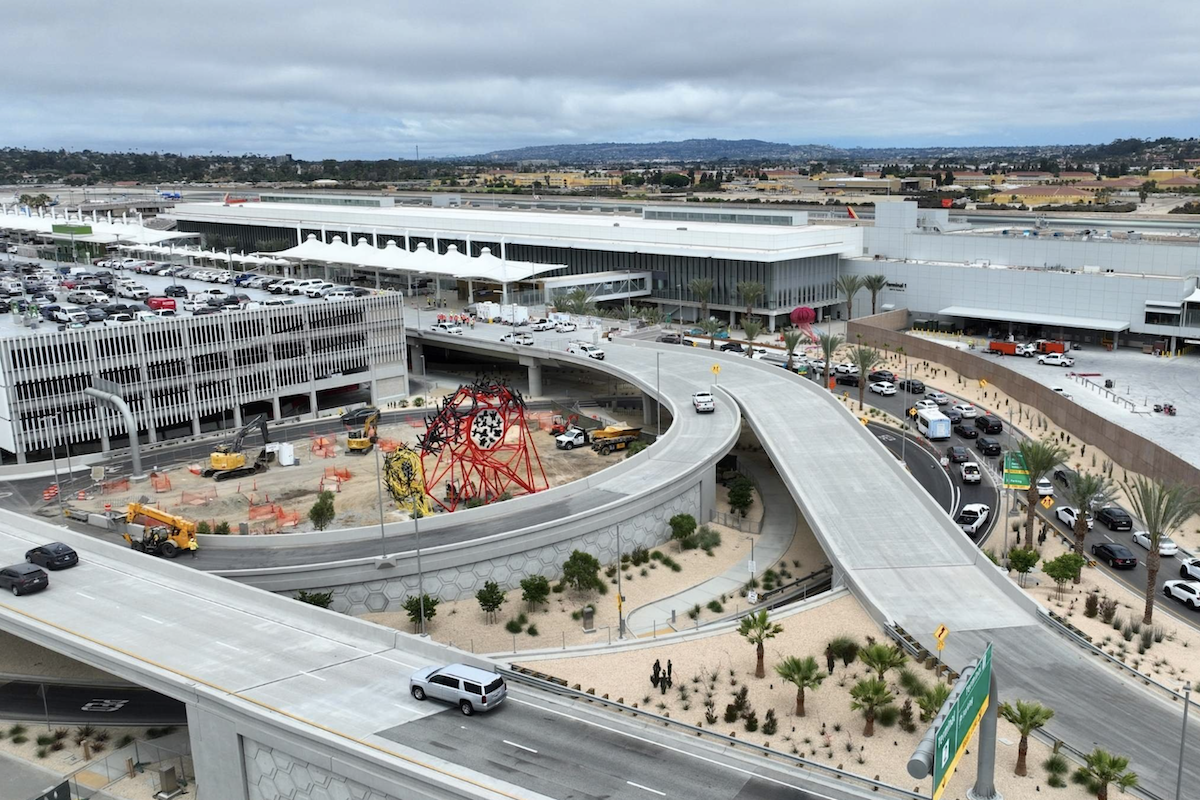“This exceptional accomplishment reflects the entire design-build team’s steadfast commitment, in collaboration with SFO, to delivering a space that uniquely prioritizes occupant health and well-being,” said Webcor Project Director, Design Wayne Campbell. The project’s design-build team includes the Austin Commercial and Webcor joint venture, along with HKS / Woods BagotED2 International / KYA.
This achievement closely follows Terminal 1 BAB’s Leadership in Energy and Environmental Design (LEED) BD+C v4 Platinum certification, which recently made headlines for becoming the world’s first airport terminal to achieve LEED BD+C v4 Platinum. These groundbreaking sustainability certifications are the culmination of years of efforts made by the design-build team to meet both standards’ rigorous requirements.
Being the first of its kind, Harvey Milk Terminal 1 BAB has become the foundation of WELL v2’s current standards for airports and embraces the WELL Standard’s 10 concepts: air, water, nourishment, light, movement, thermal comfort, sound, materials, mind, and community. For this program, the air and materials concepts were rigorously integrated into the coordination of Terminal 1 BAB’s design and were weighted particularly heavily during the terminal’s on-site WELL performance evaluation.
As outlined in SFO’s recent press release, highlights of the health and well-being measures incorporated into the terminal include:
- Highly efficient outdoor air filtration system to remove pollutants and odor to provide healthier indoor environments that meet WELL’s enhanced indoor air quality requirements as verified through third-party testing.
- Radiant heating and cooling to complement displacement ventilation to provide energy efficiency, improved indoor air quality, and enhanced passenger comfort.
- Online data provided by SFO that shows annual water quality test results, including enhanced taste properties.
- Dynamic glazed windows that change with the sun’s location to reduce glare and improve comfort.
- Large windows that harness daylight to reduce the need for electric lighting and to support occupants’ circadian rhythms.
- Building materials and furnishings with minimal human health impact based on Health Product Declarations (HPDs) and with low volatile organic compound emissions and content to support improved indoor environmental and air quality.
- Selection of products, systems, and materials with the least environmental or planetary impact based upon Environmental Product Declarations (EPDs).
- Green cleaning processes that support occupant and employee health during construction and after occupancy.
- Acoustic management through sound reducing surfaces, quieter mechanical systems, and the airport’s ‘quiet airport’ program.

| Your local Trimble Construction Division dealer |
|---|
| SITECH Southwest |
| SITECH West |
“Unlike LEED, WELL primarily focuses on a building’s impact to the human experience (mind, nourishment, and community), which distinguishes it from the ‘traditional’ sustainability standard,” said Webcor Assistant Design Manager April Chang, who led the JV’s WELL Certification efforts. “Successful certification required third-party performance verification testing of water, light, and sound.”
“SFO’s Zero Energy and Resilient Outcomes (ZERO) Committee guided, supported, and collaborated with the project team to exceed LEED Gold certification standards through additional funding to support the additional Zero Net Energy and building health measures that were proposed after the original building program was completed,” said Austin Commercial Project Manager Kent DeRusha. “These measures enhanced energy efficiency and carbon emissions reductions and promoted improved human health in the built environment.”
“The WELL Standard wasn’t originally designed for an airport setting,” Chang said. “Earning WELL Platinum Certification for this type of large-scale, 24/7 operation with multiple stakeholders was only possible because we had the support of SFO’s ZERO committee. SFO’s formation of a distinct committee, allocation of funds dedicated to achieving the terminal’s ambitious sustainability goals, and premium on improved human health in this airport terminal facility were key to our success.
“It’s also worth noting that WELL is complementary to LEED certification; we didn’t have to modify the design to achieve WELL,” she continued. "The design-build team and ZERO committee had gone above and beyond to develop a design that outperformed LEED Platinum standards from the beginning.”
"SFO's commitment to social responsibility and sustainability aligns with our mission to use research-proven strategies to positively impact occupant well-being for every project," said Allison Smith, Sustainable Design Leader at HKS, who also served on IWBI's Airport Advisory in 2020 and was the WELL Project Administrator for Terminal 1 BAB. "The process of pursuing and becoming the first to achieve this certification allowed our collective teams to better understand how to apply this people-focused standard to highly complex transportation projects and ultimately have a positive impact on the health and well-being of staff, tenants, and the traveling public."

| Your local Gomaco dealer |
|---|
| Terry Equipment |
“We are honored to be the first airport in the world to achieve full WELL Certification,” said Airport Director Ivar C. Satero. “Harvey Milk Terminal 1 was designed with both our passengers and employees in mind … as a place to be relaxed, a place to be healthy, and a place to be inspired by the legacy of pioneering civil rights leader Harvey Milk. My sincere thanks go out to the entire project team for setting the new standard for how airport facilities can truly benefit the people who use them.”




































































